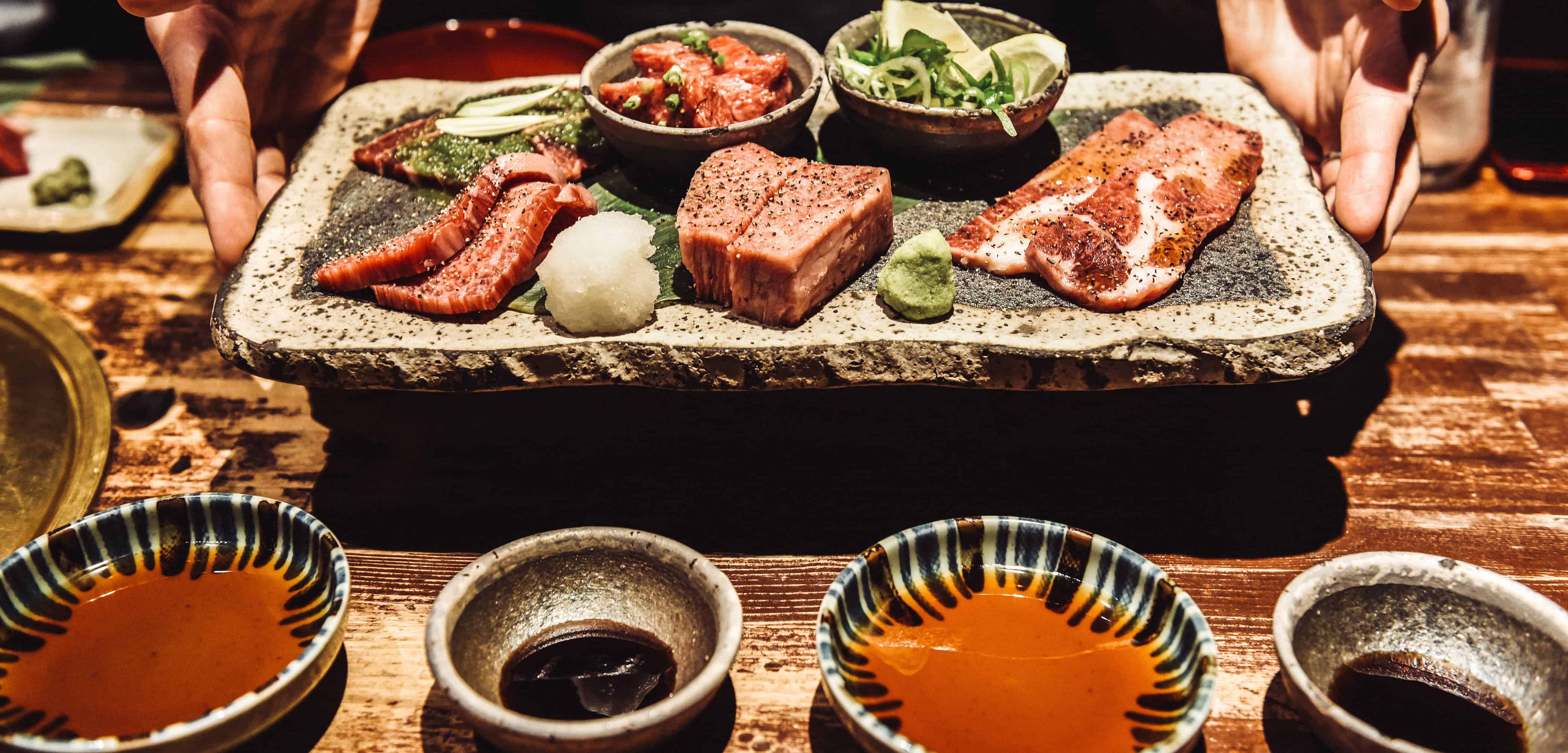If you’re planning on traveling in Japan, get ready to experience some of the most creative and delicious food in the world. But what makes Japanese cuisine so special? In addition to careful preparation and fresh ingredients, there is one other aspect that makes the flavors of Japan so unique: condiments.
You may be familiar with shoyu (soy sauce), but if you love Japanese food, it’s time to learn more about the other dips, drizzles and sprinkles that you will encounter while traveling and eating in Japan. Below, we’ve rounded up the most common Japanese sauces, spices and seasonings so that you will have a better sense of the flavors you’re sure to encounter.
Dashi: This light yellow, clear broth forms the base of many Japanese soups, like miso soup and noodle broths, and is also served on its own. The all-purpose stock is usually made by heating water with kombu (edible kelp) and shavings of katsuobushi (also known as bonito flakes, see below), and then straining it.
Tonkatsu sauce: A thick, deep brown fruity sauce that is often likened to a Japanese Worcestershire sauce, tonkatsu sauce is made with tomatoes, dates, apples, lemon juice, onions and celery. Tonkatsu refers to the dish (typically a fried meat, such as a pork cutlet) with which this sauce is typically served. It can also be used as a separate dipping sauce or mixed in with fried noodles.
Tsuyu: This thin, clear, fish-flavored soy sauce is typically used to accompany noodle dishes such as soba, somen and udon. Presented as a light brown dipping sauce or sprinkled over noodles, tsuyu is made from dashi soup stock and a mixture of soy sauce, mirin (a tangy rice wine) and sugar.
Karashi: Karashi is a spicy yellow paste that’s made with crushed brown mustard seeds and water (rather than vinegar, which is generally used to make traditional mustards). This bright yellow condiment is most commonly served as a topping for oden, a one-pot dish of eggs and fishcakes in dashi broth, or dumplings. Hotter than English mustard, karashi is sometimes used to add extra spice to other sauces and marinades.
Ponzu: Most commonly used as a dipping sauce or marinade for grilled meats and fish, ponzu is a tart, sweet-and-sour blend of citrus juice and soy sauce. It’s often offered as a dip for sashimi and hot pot-style dishes. Usually served on the side, ponzu looks a bit like soy sauce but has a distinctly citrusy tang.
Rayu: A favorite topping for ramen noodles or gyoza (fried or steamed dumplings), rayu is a Japanese chili oil that adds a spicy kick to traditional dishes. Reddish orange in tint, it’s usually served on the side, allowing you to drizzle enough to suit your palate.
Nitsume: This rich, flavorful sauce is most commonly used to prepare eel, octopus and shrimp. It’s made by simmering a mixture of eel broth, mirin, soy sauce and sugar.
Bonito flakes: Also known as katsuobushi, these light brown, paper-thin shavings are made from dried, fermented and smoked skipjack tuna. Bonito is one of the main ingredients in dashi, the ubiquitous savory broth mentioned above.
Wasabi: A vibrant bright green, this extremely spicy Japanese horseradish comes from the root of the Japanese wasabi plant and is most commonly served in a grated paste form. Often presented as a dollop alongside sushi and sashimi, wasabi is one of the most flavorful (read: fiery!) condiments you’ll encounter during your travels in Japan. A tiny bit goes a long way, so use this delicious condiment sparingly to suit your palate.

